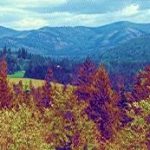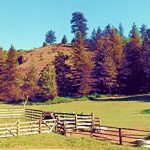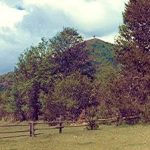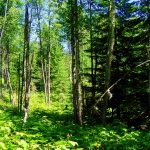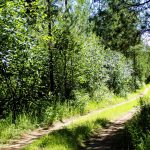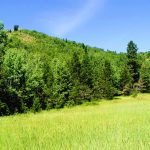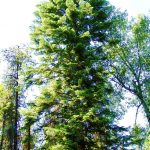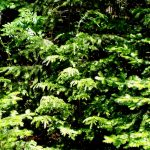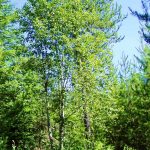The story I have to tell here goes back nearly 15 years now, which astonishes me. My memories of that time are still razor sharp, time has had no power to dull them, but I must say they are not much in the front of my mind now, lurking rather nearer the back part of the mental storage unit. Since developing the idea of doing this blog the intent to write about my experience in the backwoods and the lessons learned there has been present; the time has come to get some words down in black and white, so here we go.
Backstory: I was working at a state university in West Virginia when all of a sudden, and entirely contrary to the reassurances that had been coming from the Governor’s Office, a 10% budget cut across the board was announced in order to stave off certain disaster. What had caused the shortfall is anybody’s guess. As a mid-management employee at a university one is not privy to such information. I had been a little under two years in a brand new position, and brand new positions were the first on the chopping block so it was easy to see the handwriting on the wall. I spared the administration some trouble and resigned before I got the axe. I remember hearing from one of the staff members that she had overheard a conversation between the director and somebody in the Provost’s Office concerning my departure, in which the Higher Up posed the question, “Is he gone yet?” How’s that for team spirit? Yes, siree, gotta love the workplace. Makes being a retiree even sweeter with the remembrance.
So, what to do, where to go? I’d bought a house in the town where I worked, so I had to get that ready to hit the For Sale ads, and eventually I decided that rather than go back onto the job market and end up God knows where doing God knows what, I’d go back to the old stomping grounds in eastern Washington State from whence I hail. I hadn’t lived there for many a year, roaming all over the place as was my wont and as the need to follow my career path required. But I was in my late 40’s at the time, my parents were getting on, I’d spent very little time around my younger relatives, so I thought it an opportune time to head back to the homepatch and sort things out from there. That was in 2003. I stayed in the area until 2010, when I left the country to work abroad again. Four of those years found me living full time off the grid on property my family had owned since moving into the area from Seattle in 1955, the year I was born (in Seattle, not in the boondocks). I spent my entire childhood there, not leaving until I went away to college. When I went to college, I made the resolve in my mind to come back at some point and experience the land as the adult I would become. At the age of 48 that’s exactly what I did.
The area in question is as rural as can be. The county seat, five miles outside of which the family property sits, even today counts a whopping 2,000 population. It’s the largest town in the county, which has a land area of 1,425 square miles. That’s larger than Luxembourg, kids. It takes two and half hours to drive from top to bottom, and if you try to drive from East to West (or the other way round) the joke’s on you because there aren’t any roads across most of the county. Even today large parts of the county are Forest Service land accessible only by gravel roads impassable in winter. It’s the boondocks, plain and simple. And waaaaay up North. Sneeze too hard and you end up in Canada.
My purpose in returning, however, apart from being nearer the family, was to engage the land full-on, in a way I could only do as the educated adult I had become, not the backwoods kid climbing trees or riding horses on the logging roads. That intent was very clear in my mind when I moved there and I remained faithful to it until my time on the land came to an end. The lessons learned from that time are the subject of this post.
My living situation is easily described: a 24 ft. travel trailer under a lean-to shed with a woodstove, completely off the grid — which means no electricity and no running water. The trailer was there, my father had used it for a while before he moved into town, bless his hardy soul, so it stood in need of some rehabilitation, which I accomplished within a few weeks. I’ll spare you the details, some of which were too organic even for my own tolerance levels. Within a month I was up and running, my routines worked out, my storage areas set up, and my thoughts turned toward how to go about this new phase of life I had entered upon. Before I launch into that, however, here are some pics from the days when I was a child and the property as it was when I returned to it, almost 30 years later:
The top row of pics comes from the 1950s and 1960’s. The meadows were all open then, we used them for hay production to feed the horses in the winter months. They are open no longer, having been invaded by — what else? — jack pine (Pinus banksiana), the arboreal dandelion of that particular biome. It’s a species I cannot bring myself to love, since it runs rampant and makes a complete mess of things, showing absolutely no sense with regard to population density or sustainability. In the larger scope of things, however, it’s the first in the seral progression of trees and eventually gets edged out by more comely and tractable species such as red fir (Abies grandis) and Douglas fir (Pseudotsuga menziesii), but that takes far longer than either you or I will be alive, unfortunately. The old pics are of a working ranch. The bottom row pics show a ranch that has gone off the rails in many regards. In fact, some pieces of the original acreage had been sold off by that point, including a large meadow in the back of the property that was the main meadow we used for hay. But there was more to come after that sale …
In order to fund a scheme for doing a different kind of work, my father had some 80 acres of the property clearcut. And by clearcut one should understand exactly that: like being shaved bald. Supposedly one follows Department of Natural Resources (DNR) guidelines about leaving seed trees every so many feet, but the people who do this work are yokels and many of them a good part hoodlum into the bargain, so seed trees be damned, we’re going for the cash, in and out as fast as we can, and take a bit off the side for the guvner if you can get away with it (which apparently they did). I was unaware my father had reached such a decision or had such a thing done. When I found out, I was devastated. I would gladly have given him the money in order to spare the forest, which had developed untouched by human hand, untouched in fact by anything at all until the Great Fire of 1910 roared through the place and put the torch to much of the countryside. Well, once a clearcut is done, it’s done. You can’t exactly glue the trees back into place if you change your mind. So as I walked the land after my return in 2003 what I saw was whatever healing had happened in the 15 or so years since the clearcut had been done. What I remembered from my childhood was mature forest, towering in height and full of shadowy and mossy places where you could see the deer had bedded down. All that was now gone, and as far as the length of my natural life goes, gone forever.
In the years I lived on the property yet more carnage was to take place, so let me finish the human side of the story as quickly as possible and get on to real subject of this post: the land itself. I worked on the land when it was not under snow doing a variety of projects intended to foster the regrowth and development of the forest — seeding red fir in some areas, limbing the bottoms of white pines (Pinus monticola) to render them less susceptible to white pine blister rust (imported in the early 1900’s from France … there’s perfectly good reason to call more than one thing “the French disease”), doing species inventories in the different microenvironments over the property and so forth and so on. Toward the end of my stay two adjacent properties, one of which had been owned by my grandparents, were clearcut. Tons of people from other parts of the country had moved in and bought small acreages to build their trophy house and have a horse or a cow or God knows what, feeling that their input into the local doings was somehow essential for the survival of western civilization. They were completely unlike the local yokels we had been when I was growing up. A lot of them struck me as mildly lunatic, as if they’d been cast out from their former states of residence due to being undesirables. Crazy software people from Colorado, real estate developers from California with great ideas to put the county “on the map” (I shudder to think), retired law enforcement officials from Texas who were only too pleased finally to be somewhere where toting a gun seemed nearly always the right thing to do. On and on it went until it came to the point that I drove through the town — my hometown, if I use the proper historical referent — as though I didn’t know the place. I just stayed on the land and did my shopping two towns away.
I’d been raised to deal with life in that setting — getting firewood, dealing with snow in the winter, getting through the mud season when the roads thaw in the spring and degenerate into quagmires if you drive on them too much, yadda yadda yadda — so there was no learning curve for me in that regard. I was an old hand at it and just got down to business. I had five cords of wood split and stacked before the first frost hit. The winters there are long and can be very cold, indeed — into the minus degrees in December and January if your luck isn’t running particularly high. As long as you keep the fire going, all good. But when you need to walk half a mile to get to the county road where the car is parked … not so good. And if you got one of those 16 inch snowfalls overnight … OMG JKMN. I had all the day to deal with things, and I did, intelligently and efficiently, but it’s a hard life and after a few years I realized it was unsustainable as I aged. After the clearcuts happened on the two adjoining properties, I knew it was over. I knew the area would never be the same for me for the rest of my lifetime. I will never live there again. The carnage will continue, the looney immigrants will continue to move in, it will never be what it was because history doesn’t run backward. And neither do I. So my job now is to sort out my own path to the finish line. I made good on my promise to the land to do what I could to foster its well-being when I returned. Four years of my life were dedicated to that task. I hope that in some future I will never see some of the things I did will prove beneficial to the forest I cared for. To do more than that now is beyond my powers. In the years since moving abroad I’ve divested myself of all ownership title to the land, transferring it to family members who still live in the area. What I have from it are the very vivid memories of my time living with those 80 acres and their surrounding countryside and the lessons I learned. So, with the human folderol out of the way, let’s get to the real meat of the matter.
FOCUS
It must be clear that my experience in the backwoods was not a Walden thing. The focus of Thoreau’s experience was entirely himself. The focus of my experience was the land itself. To know it better and to understand it on its own terms was my intent. To that end I studied geology, forestry, botany, paleobotany, and soil science. I learned an enormous amount and the more I learned the more engaged with the land and forest I felt. I was not about “journaling my path” or “getting back to the land” in some bushy-beard/Birkenstock sort of way, I’d grown up there for goodness sake, I knew all about shoveling out after a snowstorm and chopping wood to stack beside the stove. So from this point forward I will make no more mention of the daily practical experience I had while living on the land those four years; those details are irrelevant, really, to the process of engaging the land on its own terms. The land does not chop wood or carry water. It makes wood and channels water, which is altogether a far more exciting business than what the likes of Thoreau or myself might do while living on it. The only changes in myself I will make mention of pertain to the domain of consciousness.
OBSERVING
For the first few months I was on the property, I walked for many hours every day, covering the entire acreage and the surrounding countryside. This was not a Walk of Remembrance, mind you. Under no circumstances was that possible. I walked as though I were seeing the place for the first time, noting everything I possibly could — the lay of the land, the changes in type of stone and soil, the plant communities associated with particular kinds of habitats, and above all the trees, their condition, variety and species predominance in various parts of the landscape. In the second year of my time on the land I wrote a report running to 80 pages, most of which consisted of description of the different microenvironments on the acreage. The diversity within that relatively small area astonished me as I discovered its extent. I did species inventories for each of the microenvironments and compared them to environments elsewhere in the area to identify common associations of overstorey and understorey (Kuchler associations), an index used in forestry literature. I discovered tree species which the forestry literature did not even show as extant in our part of the State — white alder and water birch, to be specific. As I suspected before I returned to the area, my childhood memories of things were fuzzy at best — what does a child know of species distribution or population densities? As the adult I had become I had at my disposal all the knowledge and the awareness of how to acquire and organize knowledge that someone who has worked in academia for 20 years has, and I put it all to the service of the task at hand. My aesthetic appreciation of the beauty of the landscape now became merged with a much broader understanding of the science involved in the botany, geology and forest ecology the woodland has just as we have organ systems in our bodies.
ACTION
Each year I was on the land I did a particular project, or projects if the time was sufficient, that I didn’t plan beforehand. When the snow finally cleared enough to get back out into the countryside I would walk and walk for hours, visiting my favorite spots and looking up favorite trees or bosques to see how they had fared during the winter. At some point during these rambles it would come to me: ah! that’s what needs to be done this year. The first year as I wandered over the vast and depressing acres of overpopulated, spindly and — pardon me — disgusting jack pines that the clearcut flats at the front of the property now sported, it occurred to me that what we needed by gum was some red fir seed, since red fir was the next species in the usual seral progression. Why not help speed things up a bit? As luck would have it, there had been a huge windstorm late that spring when the red fir cones were glistening in the treetops and many had come down with the wind. So I went about gathering them in shopping bags, hauling them back to my “base camp” as I called it, and spreading them out to dry so I could crumble them up and distribute the seeds over the front 20 acres that I came to call the “Pine Barrens.” The percentage of viable seed was doubtless less than it would have been had I collected later in the season, but you pays your money and takes your chances. That project took a good part of the summer months, since I needed still to increase my stock of firewood and do some brush piling to correct muddles left by the loggers. The second year I walked one fine spring day down the road, turned up a small clearing I usually bypassed and soon stood face to face with a currant bush — not the kind you read about in English children’s books that mum uses to make jellies. This is a wild one, with inedible fruit, and it serves as the secondary host for the white pine blister rust fungus (Cronartium ribicola). The tale of the back and forth that ultimately ends with dead white pines is too fiendish to recount. It still makes me queasy just to think of it. But the fungus only enters through limbs under three feet above ground level, so the thing to do, you see, is to remove those limbs, giving the tree a sort of jaunty bob haircut. On a tree that’s already 25 feet tall this can involve a bit of elbow grease, but on saplings and young trees ordinary hand clippers will do. I covered all 80 acres over one summer on a grid plan scouring the forest for every white pine I could find. Some I found were already infected, but they were a fairly small percentage of the total population. All the rest got a haircut, indeed they did. And long may they live to tell the tale. They’re lovely trees with a wonderful and distinct fragrance to the bark and wood, a light and slightly spicy fragrance that spreads out around them like someone wearing a perfume. The needles, five in a bundle, are light-colored and greyish in tint, so they catch the sunlight beautifully. On a small piece of the acreage at the very back of the property a few acres had been left untouched from the clearcut, and on this parcel were mature white pines with trunks easily two feet in diameter. It will sound dotty of me to say that sometimes I just went to sit with them because they felt so nice to be around. But the truth will out, and there we have it. If you feel the need to call Nurse Diesel, pick up the phone, babes, and go for it. 🙂
BECOMING A PART OF THE LANDSCAPE
This is where things get philosophical and on occasion a bit “woowoo” as my scientist friends would call it. They pass over such things with a roll of the eyes toward the back the head, since, after all, I’m a humanities major. OMG a HUMANITIES major, we all know what they’re like, don’t we. What else would you expect from someone who did stuff like literature. And for you literary types, you may think I read a bit too much Wordsworth somewhere along the way. Not a bit of it. Can’t stand the stuff. I was into avant-guarde, edgy things, I just never went in for blue hair and black fingernail polish. Go figure.
I make so bold as to suggest — apologies to you hard-core scientific types — that consciousness, too, has its bases of fact. We are biological units whose life derives from the Planet. The Planet has all manner of beingness on it that is not human — plants, other animals (for we, too, are animals, let us never forget it), fungi, bacterial life in astonishing variety, insects, and the Archaea, just recently (in scientific terms) established as a separate kingdom of life. We have no real idea what consciousness actually is, how it originates, how it really functions, however much we like to talk ourselves into believing the contrary. That’s the bald truth of the situation, put plainly and simply. But since we are products of the Planet like all other forms of life, it seems to me reasonable enough to assume that our consciousness — attached as it is to our biology — must have some point of access to that broader matrix of life the Planet supports. I was out in my woodland domain by myself, sometimes for as much as two weeks at a time, over a period of four years. I let go all of the points of identification that I was wont to use to define myself as a conscious being. The trees around the little clearing I inhabited cared not a whit that I knew a great deal about ornamentation in 18th century French keyboard music. Obviously, that bit of “consciousness” would not do as a common denominator between us. The only common denominator available was: beingness. So I turned my awareness to beingness first and foremost, and observed the beingness of the plant world around me. There were animals, too, of course, far too much like humans in their behavior for my taste, I fear. Had I been able to banish the lot of them to the next county I’d have done so in heartbeat. They serve their purpose in the forest ecosystem, I will admit, but when you’ve had deer chomp the tops off all the tiger lilies growing along the road just about to bloom and give you a sight for very sore eyes after months of looking at snow, you find little charity in your heart for our four-legged friends. You’d prefer to see them at the bottom of the sea, to be perfectly frank. And so I still would, the wretched little buggers.
Humans are all about talk. Talk, talk, talk, all the time talk. There was no talk where I was. There was me and the forest. So the modality of my consciousness changed gradually to become non-verbal. Days would go by when I would say nothing at all because there was no point. This was no Trappist vow under enactment, it was a logical consequence of the circumstances I inhabited. Instead of talk there was awareness. As I walked through the forest, either for the sheer pleasure of walking or as I went about my appointed tasks, I remained acutely aware of everything around me. With your consciousness tuned to beingness, the sight of something will catch your breath with its beauty and surprise you into a new awareness that forces your mind to expand in order to accommodate it. Here is an example.
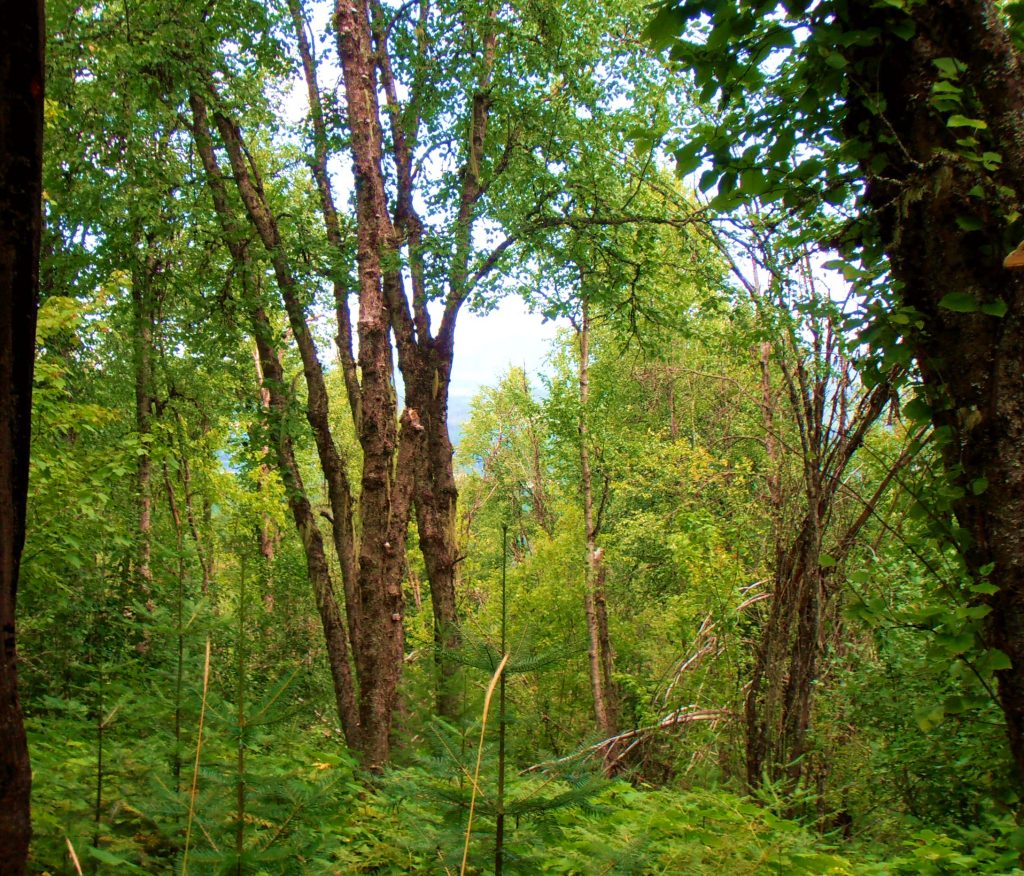
This copse of birches lies no more than a quarter mile from what was my humble abode. I’d known it since I was a child. Farther up the hill is a small lake nestled in a ring of hills. Every time I entered that space as the adult I had become I felt my awareness shift. Since none of us knows how consciousness works, I needn’t bother with an attempt to explain how it happened. I can, however, tell you the effects. After an hour in that space I felt myself in a completely different world from the world outside it. The problem with non-verbal awareness is that it’s very difficult — impossible, really — to put into words, which are useful for telling someone what to do or joking or other human things, but very poor stuff indeed when it comes to communicating beingness. Heidegger had a go at it and made a fine mess — which he never cleaned up, by the way, he just croaked and left that job to other people. Since each of us is individual, I can say with no great certainty what effect that space might have on you. All I can say is this: my own direct experience tells me that there is within human consciousness a register for beingness that affords us the possibility of directly experiencing the beingness of another entity or entities and entering somehow into that beingness in some substantive way. The resulting experience is doubtless a kind of blending, a meeting of beingness rather than a meeting of minds, since our own consciousness never gets so out of the way that we could sidestep its presence and influence entirely — unless we are comatose. Nevertheless, whenever I entered the space of that birch copse, the feeling I had of myself changed so much that I could scarcely relate it to the self I felt when stomping about the Pine Barrens spreading red fir seed. What is more, just by looking at that photo the experience of that space floods through me as though I were there. That different sense of self perfectly reflects the enormous difference in the two physical environments, which could as well be from two different countries, so numerous and significant are the differences between them.
Let’s go one step further while we take a step back to our white pines on the small acreage left untouched by the clearcut. I said above that sometimes I went to sit by them just because they felt nice to be around. What I was experiencing was their beingness, of course, that communicated itself to me by their physical presence, their fragrance, but also, I am sure, by something else. A beingness has a particular tone to it, like a musical chord that identifies it from all other beingnesses. I reach for a musical analogy because it seems to me the only one available verbally, but the effect I describe isn’t only emotional, it goes far deeper. Something based on that level of awareness must be involved with penguin mothers finding their kids in the Grand Central Station of an iceshelf in Antarctica with thousands of birds huddled in the same space. The tone of beingness, being individual, would make it identifiable. In any case, I don’t even need to see a picture of a white pine to tell what its beingness is like. I spent so much time around them I could turn into one if I knew how — poof! there I am, a Xerox copy of the real deal. I may not get the internal things exactly right, although I do know my “xylem up, phloem down” :-), but I could pull off a fairly convincing copy, I’m sure. The same is true even for the jack pine, since God knows I was around them more than anything else given the state of things on the acreage. They’re not without their charm, to be sure, but goodness sake they just don’t know when to stop. Before I give another example, here’s another pic for you:
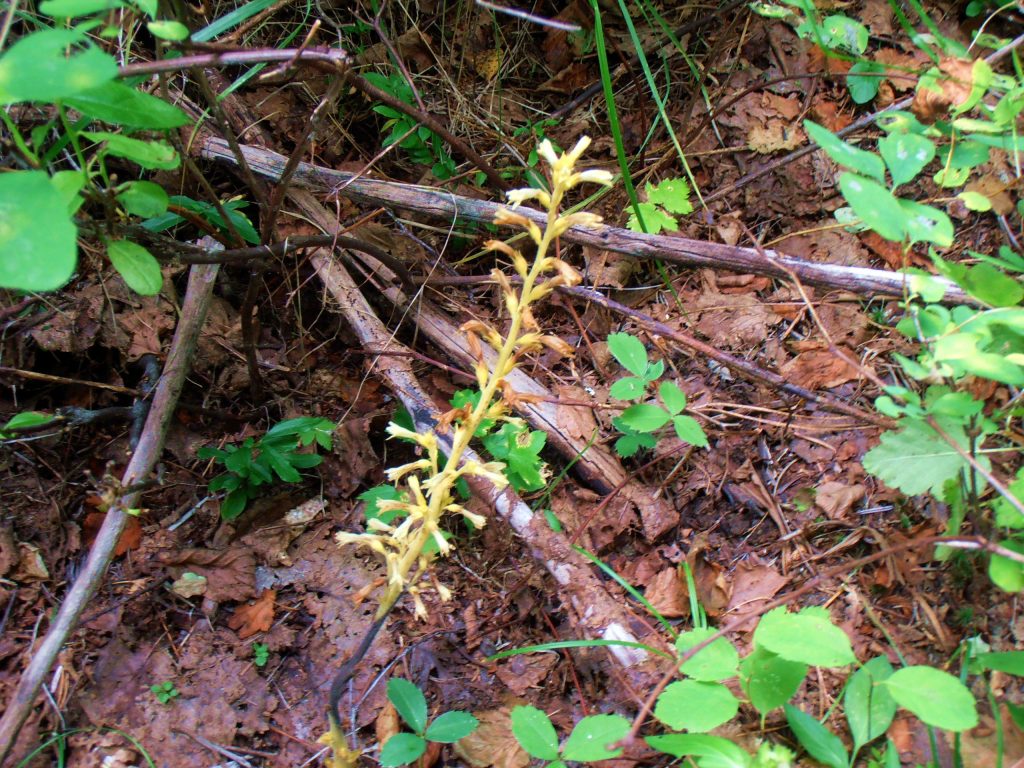
I’d been reading about native orchids in the Pacific Northwest in the early spring before any wildflowers were yet in bloom, and some weeks later on a ramble around the vicinity near my humble abode I came upon this lovely thing. I stopped dead in my tracks. As I think back now on the experience, I was arrested by the surprise at seeing it, because I had not come across orchids in that spot before. This was the first orchid I had seen that season, into the bargain. I understand now that I stood looking at it as though it were the only plant within miles, entirely focused on it, in order to perceive its beingness. Orchids are things of wondrous beauty wherever in the world they occur. In the northern climes I inhabited, they are also not very numerous as individuals and very few in species number. Coming across this one was like finding a foundling child on the forest floor. You will probably think me dotty by this point, anyway, so I won’t hesitate to confess that I got down on the ground and “sat with” the orchid for over half an hour. Once again, I don’t even have to see the photo to feel it again, I just have to think of it and the sense returns, the tone of that beingness comes to back to me.
In the cultures of native peoples there is much of this sort of thing, as we all know, but it’s veiled in a symbology that makes getting to the facts of the matter rather difficult. There are native peoples who use telepathy, who commune with the spirits of other kinds of beings like trees and animals, and it has gained cache among us white folks who feel ourselves spiritually barren in our rational, scientific world. I took none of that particular baggage with me into the forest, I hasten to say. I approached things from the platform of my own awareness to the greatest degree possible. Certainly I was reading and studying all the while, learning the science of the life around me in ever greater detail, but that didn’t compromise my basic stance of approaching the beingness of things. Knowing the carbon structure of lignin in the wood of the trees outside my humble abode was simply one more way of knowing them. So I believe my approach and the results it produced were as free from preconceived influence as I could make them. There were no fairies, no water sprites, no wood nymphs, nothing of that sort. Pity, really, because if I’d snapped some pics of such like I’d now be enjoying retirement on the French Riviera 🙂
So there you have it. I close with an experience I had after being abroad for five years and returning to wander once again among the forest there. As I walked around it was like I had never been away. Things had changed yes, but only in the particulars, not in the grand scheme of things. The deer (those creeps) had gnawed the white alder clump by the clearing where I lived, but they were still going. The lady slipper orchids were out at that moment and I counted over a dozen in a short walk from where I lived (now empty ground, my humble abode gone elsewhere), a greater number than I had ever seen there. The white pines flourished, the air was fragrant with all the plants in the early summertime, and I thought to myself, “those four years were among the best of my life.” And they remain with me, wherever I go.

